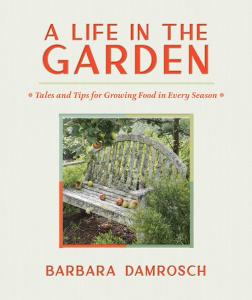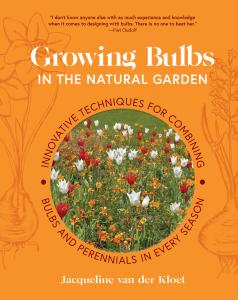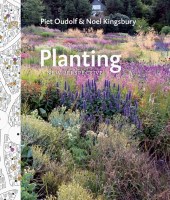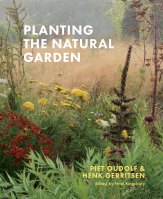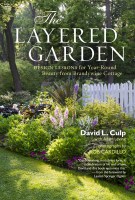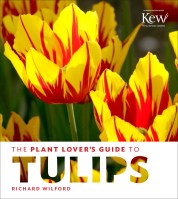Books for Bulb Planting!
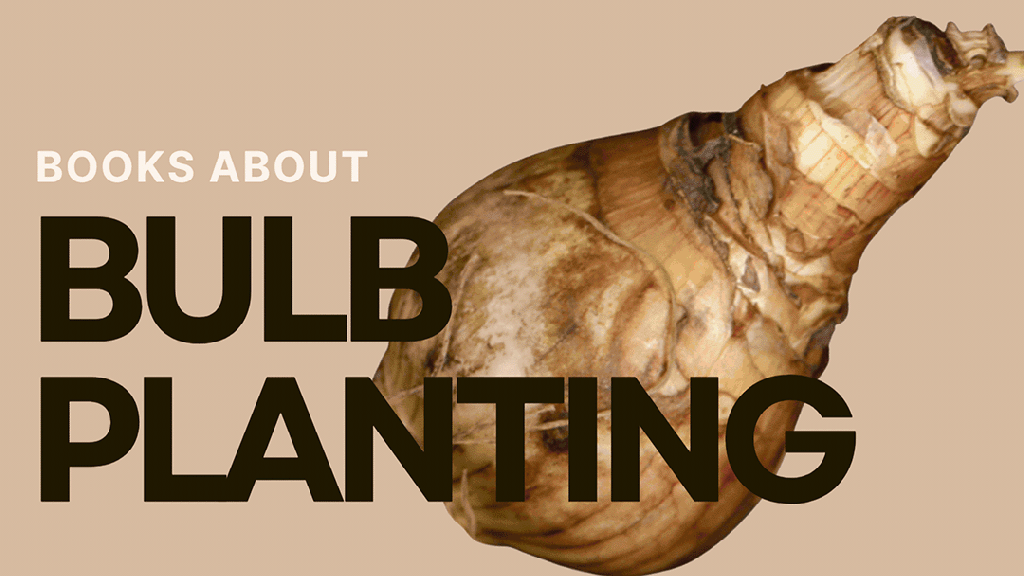
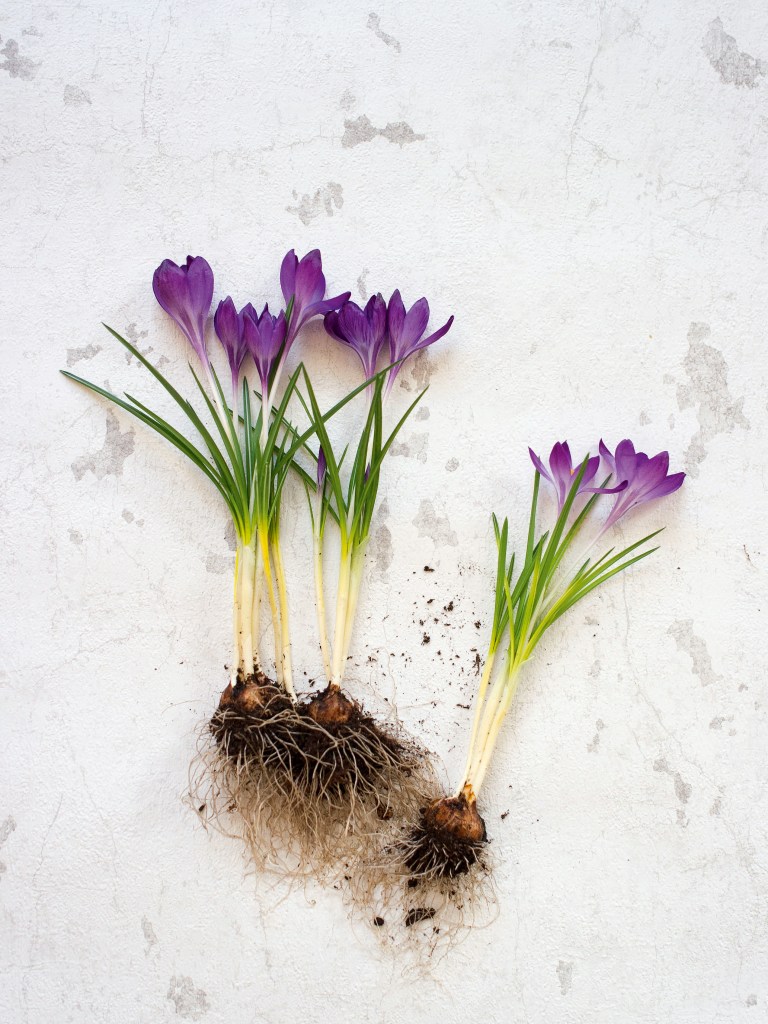
What is a flower bulb?
The term bulbs refers not only to actual flower bulbs such as tulip and daffodil, but also to corms, root tubers and rhizomes. It would actually be more practical and less confusing to use the generic term geophytes, which means plants with underground storage organs. But for convenience, we will stick to the term bulbs.
A true bulb is usually spherical but in some cases can also be a more elongated underground part of a future flower. A mini version of this flower is already contained within the heart of the bulb. If you were to cut the bulb exactly in half, you would be able to see it. It is surrounded by white, fleshy modified leaves, as in an onion, which are called scales. These scales contain all the nutrients the baby flower needs to grow into a mature flower. The scales are surrounded by a brown, papery skin, which protects the scales and therefore also the bulb.
—Jacqueline van der Kloet, Growing Bulbs in the Natural Garden
Fall Bulbs for Spring Flowers
“Gardening teaches us to be optimists. We plant seeds and bulbs that look brown and wrinkled and expect them to grow. We wait, not always patiently, for something to happen. Our minds race on to the full-blown flower and how beautiful it will look. Oh, what a glorious sight your flower garden will be!” —Jenny Rose Carey, The Ultimate Flower Gardener’s Guide
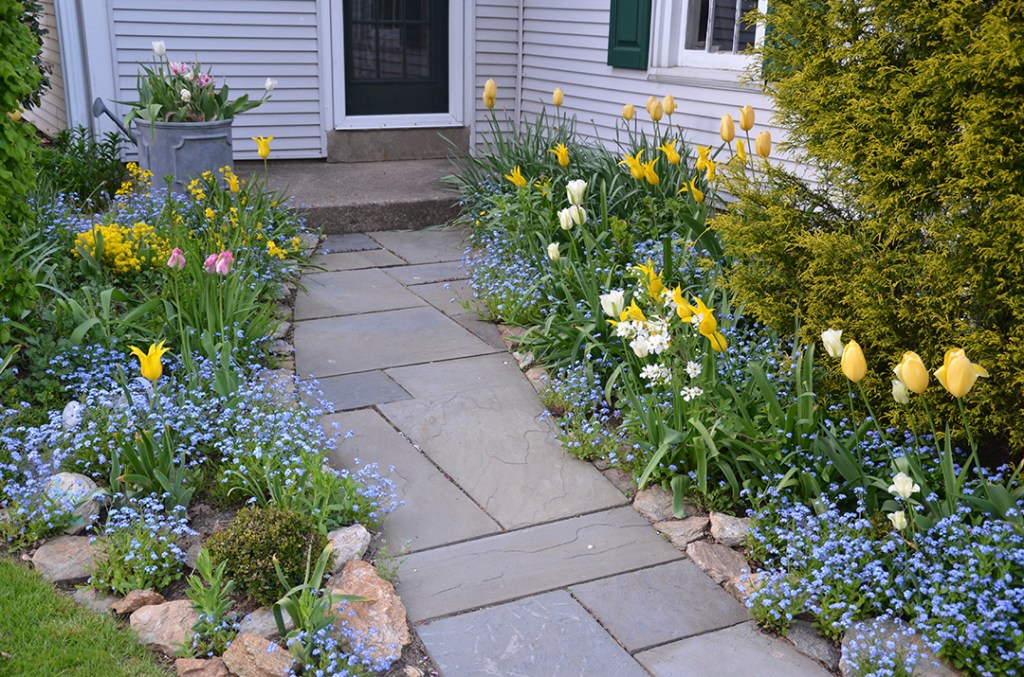
Jenny Rose Carey is a renowned gardener with extensive flower gardening knowledge. In her book The Ultimate Flower Gardener’s Guide you’ll learn how to combine shape, color, and texture to create the garden of your dreams! Here is some of her advice on growing bulbs:
“Bulbs are a fun and useful addition to the flower garden. Planting bulbs in containers or in the ground is one of the easiest ways to have a brilliant show of flowers in spring. They are relatively cheap to buy and produce flowers in an assortment of shapes and colors. Bulbs that are hardy in your area are the best value for money.
They should come up year after year and may be so successful that they multiply…Spring-flowering bulbs are perfect to plant right outside your door so that you see them whatever the weather.
Mix and match bulbs, thinking about flowering time, height of bloom, shape of flower, and colors. They can be planted directly into the ground or in deep frost-proof containers. In pots or for an annual show in the ground, pack them close together but not touching.
Layer the bulbs if you want a spectacular spring display. Put the largest bulbs toward the bottom of a ole, then add the next largest, and the smallest ones on top, separating each with a layer of soil. They will find their way through the other bulbs to bloom. “
The colors, shapes, and scents of flowers are as ravishing to the senses as to the soul. But it’s all too easy get things wrong: colors that clash, flowers that bloom at the wrong time, plants that fail to thrive. Enter The Ultimate Flower Gardener’s Guide by expert gardener Jenny Rose Carey. She tells you exactly how to get started, how to combine plants for the most spectacular effects, and how to keep your garden going from year to year. Whether you’re interested in dramatic color combinations, how best to use a favorite flower, or how to create a garden for a specific purpose, such as nourishing pollinators, you’ll find the answers in this friendly, information-packed book. As Jenny herself says, “Don’t be afraid—just have a go!”

Simple Bulb Tips and Tricks for Next Year’s Blooms
The Month-By-Month Gardening Guide is a year-long primer on what to do when. It is a must-have for any home gardener, new or experienced, seeking clear guidance on garden success.
“Bursting with useful advice, especially for new gardeners.” —Booklist
To be a successful gardener, you need to know two things: how to do something and when to do it. Both concepts are thoroughly tackled in The Month-By-Month Gardening Guide. This comprehensive approach to gardening guides home gardeners—whether you are growing vegetables, flowers, or houseplants—through a year of growing. Throughout, the emphasis is on organic, wildlife-friendly techniques. By following the guidance detailed in this hardworking primer, you’ll be well on your way to a beautiful and bountiful garden that will provide pleasure throughout the year.
Bulbs for Food with Barbara Damrosch
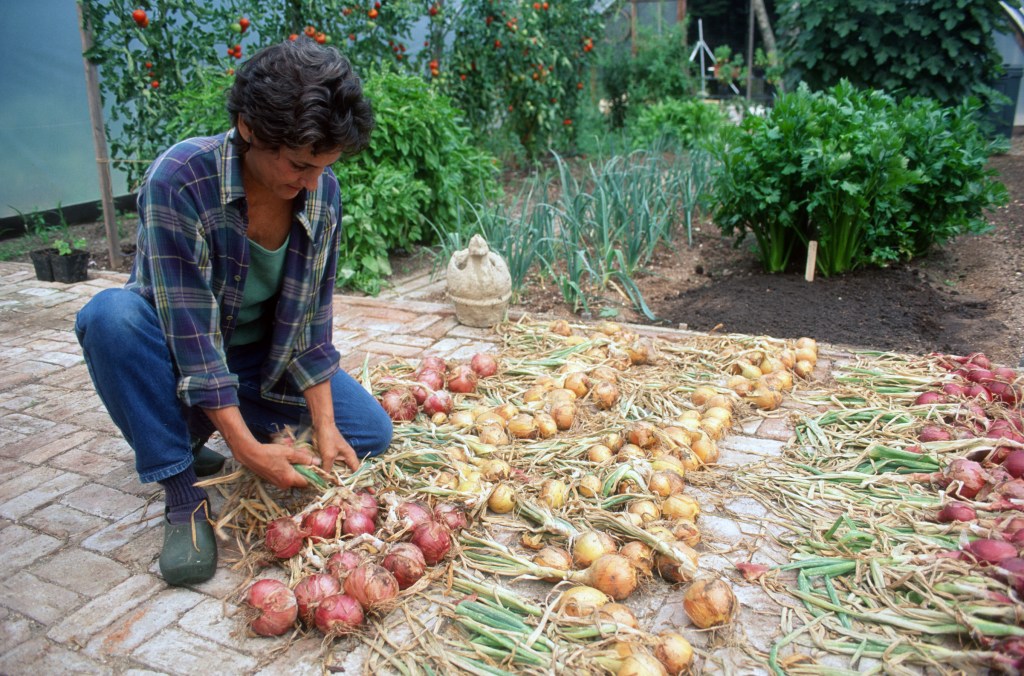
Enter the “Onion Tribe.” Legendary garden writer Barbara Damrosch shares everything you need to know about growing, curing, and preparing onions, garlic, scallions and more alliums. She recommends adding garlic to your fall bulb-planting routine, along with tulips, daffodils and lilies for larger heads of garlic.
“Drawing on a lifetime of organic gardening, Barbara Damrosch collects her lessons learned and wisdom gained into an easy-to-read-and-enjoy overview of kitchen gardening. For the new gardener, there is encouragement on top of nuts-and-bolts advice. For every gardener, there is inspiration to face the challenges inherent in a life deeply rooted in and fed from the garden.” —American Gardener
In A Life in the Garden, horticultural icon Barbara Damrosch imparts a lifetime of wisdom on growing food for herself and her family. In writing that’s accessible, engaging, and elegant, she welcomes us to garden alongside her. Personal, thoughtful, and often humorous, this book offers practical DIY insights that will delight gardeners, cooks, and small-scale farmers. With a personal and sometimes irreverent tone, Barbara expresses the pleasure she takes in gardening, the sense of empowerment she finds in it, and the importance of a partnership with the real expert: nature.
Bulbs in Unexpected Arrangements
“Bulbs dominate the planting schedule this month, many hundreds and hundreds of them. I don’t think of this as a chore; rather, I think of it as paying forward for the joy I will receive come spring. I scatter the bulbs, dig a small hole, pop each bulb in, and offer a silent Bless you, I hope to see you in the spring!” —David L. Culp, A Year at Brandywine Cottage

Along with his partner, Michael Alderfer, David Culp is the creator of the gardens at Brandywine Cottage in Downingtown, Pennsylvania. He is the author of A Year at Brandywine Cottage and The Layered Garden, and a noted expert on herbaceous perennials. He developed the Brandywine Hybrid strain of hellebores and was cited in the Wall Street Journal for his expertise on snowdrops.
“Arrangements don’t have to be about flowers; we use leaves and stems and pods and weeds. For indoor arrangements, foliage colors are beautiful on their own, or with a few flowers for highlights. This is also when we pot up bulbs like amaryllis and paperwhites for indoor display over the next couple of months.” —David L. Culp
“If you've been looking to be inspired by nature and everything your garden gives you, you'll be enriched by the tips and wisdom presented in this book.” —Garden Design Magazine
There has never been a better time to dedicate yourself to a life enriched by nature. In A Year at Brandywine Cottage, David Culp inspires you to find that connection in the comfort of your own backyard.
Organized seasonally, A Year at Brandywine Cottage is filled with fresh ideas and trusted advice on flower gardening, growing vegetables and herbs, creating simple floral arrangements, and cooking seasonally with home-grown produce. You’ll find suggested tasks for each month, including advice on when to plant and harvest, how to weed and water, and what to plant for year-round beauty.
Packed with glorious photography by Rob Cardillo and brimming with practical tips, A Year at Brandywine Cottage is your guide to living your best life in—and out—of the garden.
Learn from acclaimed garden designer Jacqueline van der Kloet
“Spending a beautiful autumn day planting all these bulbs is always tremendously exciting because you can tell yourself that they are all little gifts that will open by themselves next spring, revealing a succession of spring flowers in little groups all over the garden.” —Jacqueline van der Kloet, Growing Bulbs in the Natural Garden

“I don’t know anyone else with as much experience and knowledge when it comes to designing with bulbs.” (Piet Oudolf)
Growing Bulbs in the Natural Garden is a four-season guide to combining bulbs with perennials and grasses in a loose, nonchalant style, from a leading figure in the New Perennial movement. From the earliest snowdrops to alpine violets, tulips, alliums, late autumn crocuses, and many more, bulbs add interest and color to the garden throughout the year. Renowned naturalistic garden designer, Jacqueline van der Kloet, has mastered a casual, magical technique where bulbs emerge playfully among other plants, as if dancing freely among the perennials and grasses. Both friendly and accessible, the book introduces bulbs as essential to any garden at any scale, inviting in pollinators, providing wonderful pops of color and personality, and extending a garden’s bloom time in the shoulder seasons.
Readers will find information on:
- Bulbs basics for beginners, including easy varieties that anyone can grow well
- Color combinations that will transform the character of any garden
- How to plan, plant, and care for bulbs in every season, including handy tools to make work easier
- Tips on naturalizing bulbs so they come back on their own, year after year
- How planting bulbs directly into grass transforms a lawn (and invites the bees in early spring!)
- Techniques for layering bulbs in smaller spaces such as containers, balconies, green roofs, and wall-side borders
- Tips for growing bulbs on the larger scale
- Perennial partner plants for a standout, integrated garden in constant bloom
Jacqueline van der Kloet’s 4 Favorite Tools for Planting Bulbs
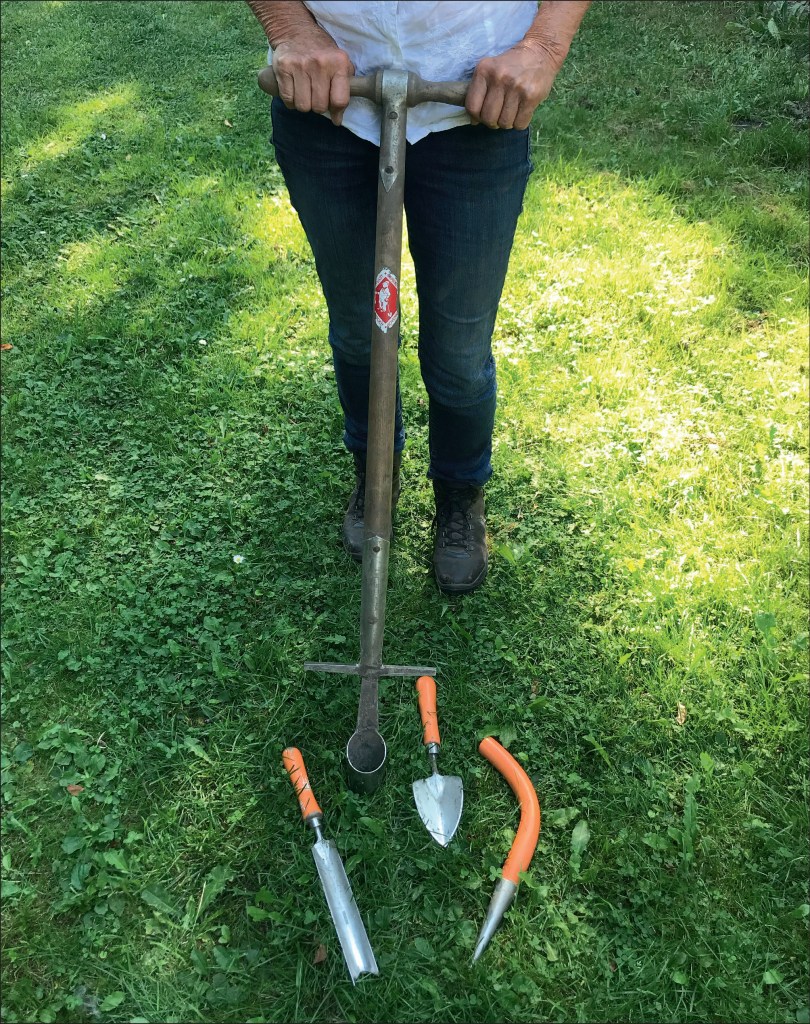
- A trowel with a sharp point that makes it easy to dig holes for daffodils, grape hyacinths, Fritillaria, snowdrops, anemones and suchlike.
- A tool with a long, semicylindrical blade with a sharp curved edge at the bottom—absolutely ideal for planting bulbs that need to be planted deep down at the right depth.
- A dibber, a sort of “pricker” with a metal point that effortlessly pricks holes in a lawn to drop snowdrops and crocuses in. The only thing you have to do when using this tool is have a bucket of organic compost nearby to fill in the holes afterwards.
- And then I have an original tulip planter; perhaps a bit superfluous, but when I heard that this model was based on Christopher Lloyds’ historical bulb planter, I just had to have it. It is a small, tapered cylinder at the end of a long pole, which you screw into the ground and then pull out again.


